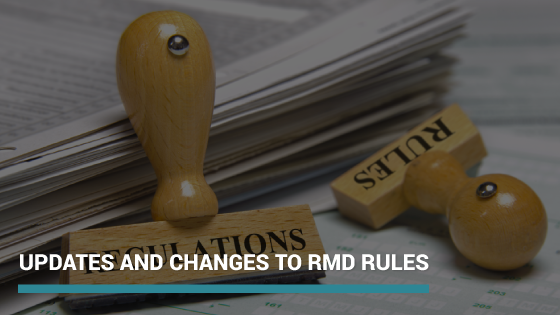New Updates and Changes to the Required Minimum Distribution Rules
Most owners of qualified retirement plans, such as an individual retirement account (IRA) or an employer-sponsored 401(k), are aware that, beginning at a certain point of the account holder’s life, they will need to begin taking a certain required minimum distribution (RMD) from the account, as necessitated by federal tax law.
There have been a number of recent changes to RMDs that have been enacted, some temporary and others permanent. Let’s take a few moments to discuss them and how they may affect you.
No RMDs in 2020
As part of the Coronavirus Aid, Relief, and Economic Security (CARES) Act passed in March, all RMDs from qualified accounts that are normally required to take an RMD are suspended for 2020. It will not be necessary for the account owner to take a distribution from the account for the 2020 tax year.
Currently, this provision is only set to be in effect for 2020; this may be extended depending on prevailing circumstances. We will keep apprised of any continuance of this provision through future legislation and will duly advertise if it is extended.
RMD Starting Age Increased
As part of the Setting Every Community Up for Retirement Enhancement (SECURE) Act of 2019, the mandatory age at which RMDs must begin to be taken has been increased from 70.5 to 72 years of age.
This change takes effect for any account holder born after June 30, 1949. Any person who was born on or before June 30, 1949, will need to abide by the previous RMD schedule.
Rollover Relief for Early Distributions
Account-holders who had already taken an RMD for 2020 prior to the passage of the CARES Act have the opportunity to rollover the distributions back into their accounts with no tax liability.
Account-holders currently have until August 31st of 2020 to rollover any RMDs already taken for the 2020 tax year. The rollovers are not subject to the one rollover per twelve months restrictions normally in effect, nor any of the restrictions normally set on rollovers from Inherited IRAs.
Beneficiary IRA RMDs
Another provision within the SECURE Act includes changes to inherited IRAs. Going forward, beneficiaries must distribute the entire balance of the inherited IRA by the end of the tenth year following the death of the original owner. Beneficiaries can take as little or as much as they’d like each year, but the entire account must be distributed after 10 years. An ideal distribution plan would minimize the taxes paid over the distribution period.
There are, however, some eligible designated beneficiaries of IRAs who are exempted from these new provisions. These include the spouse of the account owner; a beneficiary who is disabled or suffers from a chronic illness; a minor child of the account owner; a beneficiary who is not more than ten years younger than the account owner, and a properly executed “See-Through” trust that is the beneficiary. These eligible beneficiaries will be able to utilize the old rules to take RMDs over their respective life expectancies.
Prior to the passage of the SECURE Act in 2019, beneficiaries of an inherited IRA from a deceased owner were able to “stretch” the distributions that were required to be taken from them over their own life expectancy.







